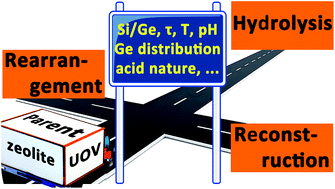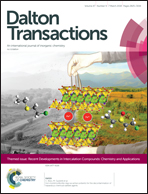Insight into the ADOR zeolite-to-zeolite transformation: the UOV case†
Abstract
IPC-12 zeolite is the first member of the ADOR family produced by the structural transformation of UOV. The details of the UOV rearrangement were studied to determine the influence of the properties of the parent zeolite and treatment conditions on the outcome of IPC-12 formation. It was established that incomplete disassembly of UOV can be caused by insufficient lability of interlayer connectivity in the parent material possessing Si-enriched D4Rs or by inhibition of hydrolysis by diluted acid at high temperature. The impacts of specific interactions of the framework with anions on controllable breaking of interlayer connectivity and the conditions of the treatment at low pH (<−1) on the characteristics of the produced IPC-12 were found to be negligible. The concentration of the acid significantly influences the extent and even the direction of UOV transformation. Layer disassembly is inhibited in 1–4 M acid solutions, and complete hydrolysis to a layered precursor can be achieved in 0.1 M solution, while application of 12 M solution led to direct formation of IPC-12. Layer reassembly followed using in situ XRD measurement with a synchrotron source was found to be a gradual process starting at 40 °C and completing at 200–220 °C.

- This article is part of the themed collections: Celebrating our 2019 Prize and Award winners and Recent Developments in Intercalation Compounds: Chemistry and Applications


 Please wait while we load your content...
Please wait while we load your content...